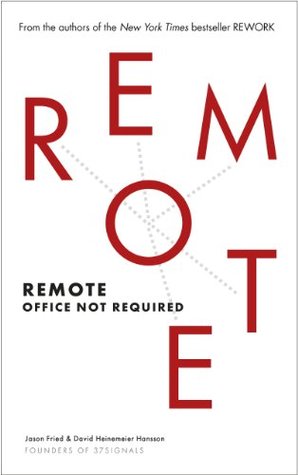More on this book
Community
Kindle Notes & Highlights
Once you’ve structured your work technique and expectations to deal with someone seven hours ahead in Copenhagen, the rest of the home office in Chicago might as well work from 11am to 7pm or 7am to 3pm—it’s all the same.
The beauty of relaxing workday hours is that the policy accommodates everyone—from the early birds to the night owls to the family folks with kids who need to be picked up in the middle of the day.
The new luxury is the luxury of freedom and time. Once you’ve had a taste of that life, no corner office or fancy chef will be able to drag you back.
Worth counting too is the number of days you spend at the office emailing someone who sits only three desks away. People go to the office all the time and act as though they’re working remotely: emailing, instant messaging, secluding themselves to get work done. At the end of the day, was it really worth coming to the office for it? Look around inside your company and notice what work already happens on the outside, or with minimal face-to-face interaction. You may be surprised to discover that your company is more remote than you think.
“If we’re struggling with trust issues, it means we made a poor hiring decision. If a team member isn’t producing good results or can’t manage their own schedule and workload, we aren’t going to continue to work with that person. It’s as simple as that. We employ team members who are skilled professionals, capable of managing their own schedules and making a valuable contribution to the organization. We have no desire to be babysitters during the day.”
Either learn to trust the people you’re working with or find some other people to work with.
At 37signals, we’ve found that we need a good four hours of overlap to avoid collaboration delays and feel like a team.
When someone wants to demonstrate a new feature they’re working on at 37signals, often the easiest way is to record a screencast and narrate the experience. A screencast is basically just a recording of your screen that others can play back later as a movie. It can be used in several ways, including for presenting the latest sales figures or elaborating on a new marketing strategy.
At 37signals we’ve institutionalized this through a weekly discussion thread with the subject “What have you been working on?” Everyone chimes in with a few lines about what they’ve done over the past week and what’s intended for the next week. It’s not a precise, rigorous estimation process, and it doesn’t attempt to deal with coordination. It simply aims to make everyone feel like they’re in the same galley and not their own little rowboat.
Meetings should be great—they’re opportunities for a group of people sitting together around a table to directly communicate. That should be a good thing. And it is, but only if treated as a rare delicacy. When meetings are the norm, the first resort, the go to tool to discuss, debate, and solve every problem, they become overused and we grow numb to the outcome. Meetings should be like salt—sprinkled carefully to enhance a dish, not poured recklessly over every forkful. Too much salt destroys a dish. Too many meetings can destroy morale and motivation.
Keeping a solid team together for a long time is a key to peak performance. People grow closer and more comfortable with each other, and consequently do even better work. Meanwhile, rookie teams make rookie mistakes. Remember, doing great work with great people is one of the most durable sources of happiness we humans can tap into. Stick with it.
in hiring for remote-working positions, managers should be ruthless in filtering out poor writers.
Start by empowering everyone to make decisions on their own. If the company is full of people whom nobody trusts to make decisions without layers of managerial review, then the company is full of the wrong people.
As a manager, you have to accept the fact that people will make mistakes, but not intentionally, and that mistakes are the price of learning and self-sufficiency.
At 37signals, we fight this natural tendency toward overwork in a variety of ways. For example, from May to October, we give everyone an additional weekday off—more time to spend outside while the weather is nice and a good way to decompress from a hard-work winter.
In the same way that you don’t want a gang of slackers, you also don’t want a band of supermen. The best workers over the long term are people who put in sustainable hours. Not too much, not too little—just right. Forty hours a week on average usually does the trick.
Rather, the only reliable way to muster motivation is by encouraging people to work on the stuff they like and care about, with people they like and care about. There are no shortcuts.
Routine has a tendency to numb your creativity. Waking up at the same time, taking the same transportation, traveling the same route, plopping down in the same chair at the same desk in the same office over and over and over isn’t exactly a prescription for inspiration.


